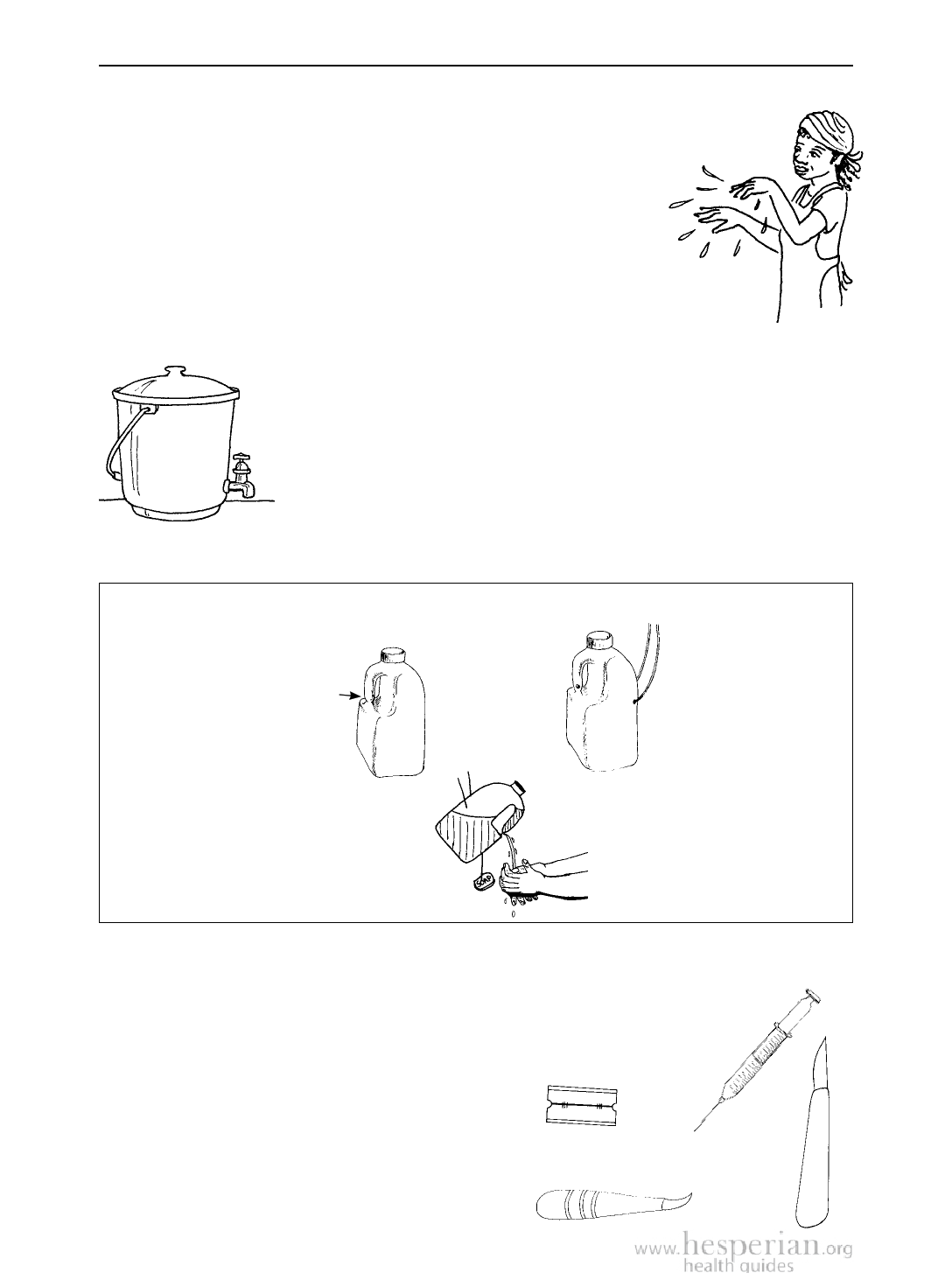
526 Health Care Skills
Washing your hands
Wash your hands before and after caring
for another person. It the most important way
to kill germs living on your skin. You need to
wash your hands even more thoroughly and
for a longer time:
Let your hands dry in the
air instead of using a towel.
Do not touch
anything until
your hands
are dry.
• before and after helping someone give birth.
• before and after touching a wound or broken skin.
• before and after giving an injection, or cutting or piercing a body part.
• after touching blood, urine, stool, mucus, or fluid from
the vagina.
• after removing gloves.
Use water
that flows.
Use soap to remove dirt and germs. Count to 30 as you
scrub your hands all over with the soapy lather. Use a brush or
soft stick to clean under your nails. Then rinse. Use water that
flows. Do not reuse water if your hands must be very clean.
Try making a Tippy Tap. It will save water and will make it easy to keep a supply of
clean water for washing hands.
Use a large,
clean plastic
bottle with
a handle.
1. Pinch the
handle
together here
with a pair of
hot pliers or a
hot knife.
2. M ake a small
hole in the
handle, just
above where
you sealed it.
3.To hang the tippy tap,
make 2 more holes in
the other side of the
bottle and pass a string
through them. Now
you can hang it on a
peg or tree branch.
4. F ill the
bottle
with clean
water and
replace
the lid.
5.When you tip the
bottle forward, the
water will flow out,
so you can wash your
hands. Do not make the
hole too large or it will
waste water.
You can also hang a bar
of soap from the string.
How to disinfect equipment and tools
Cleaning tools and equipment to get rid of nearly all the germs is
called high-level disinfection.
Tools must first be washed and then disinfected if they are used to:
• cut, pierce, or tattoo skin.
• give an injection.
• cut the cord during childbirth.
• examine the vagina, especially during or after
childbirth, a miscarriage, or an abortion.
• when giving fluids in the rectum.
Where Women Have No Doctor 2012